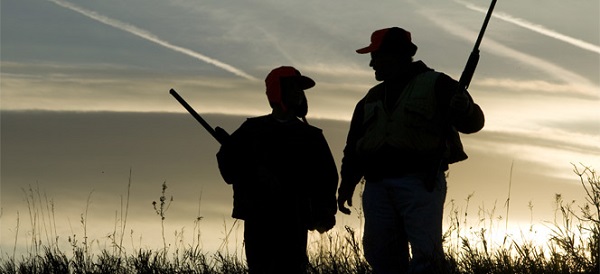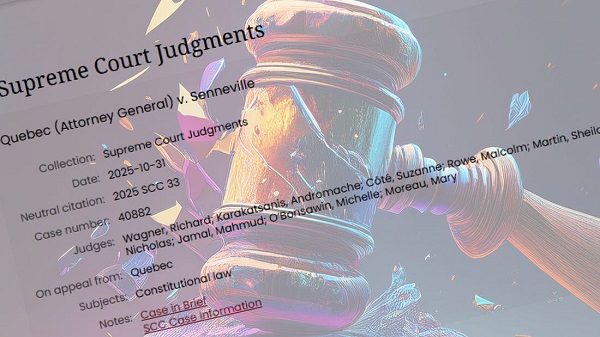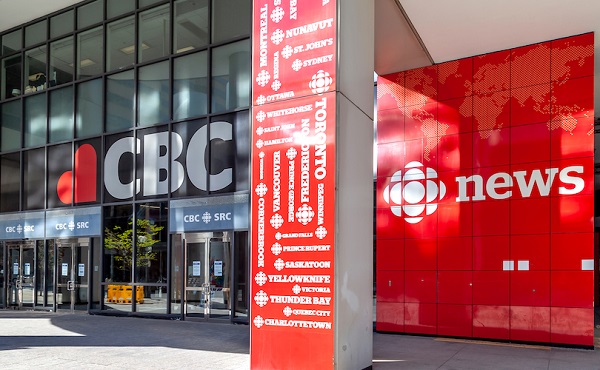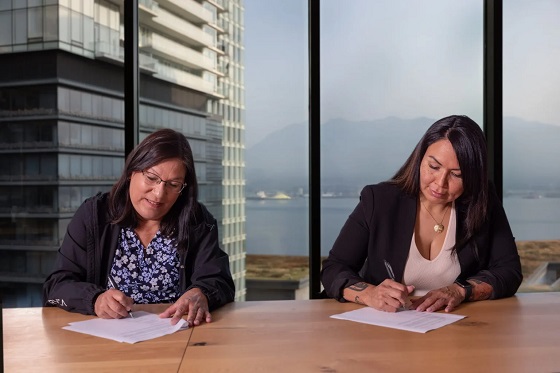Justice
Ottawa’s gun buyback is rightly falling apart

From the Canadian Taxpayers Federation
Author: Gage Haubrich
Prime Minister Justin Trudeau’s gun ban and buyback policy is running out of steam.
And it hasn’t even left the station.
The buyback is broken. Law-abiding firearms owners don’t want to lose their guns. It doesn’t go far enough for gun-control advocates. And taxpayers don’t want to pick up the massive bill.
“It’s a waste of Canadian’s money,” said a spokesperson for PolyRemembers, a prominent gun-control advocacy group. “We are not reducing the risk level. It’s just for appearances.”
Instead, PolyRemembers wants the government to go further and ban even more models of firearms.
But if the recommendation is to ban more guns, the solution brings a lot more problems.
And Ottawa already tried that. The federal government tried to dramatically expand the list of guns banned with committee amendments. One of the additions included the semi-automatic SKS rifle, of which there are estimated to be more than 500,000 in Canada.
After the introduction of amendments to Bill C-21 that would have seen many common hunting rifles banned, the Assembly of First Nations passed an emergency resolution opposing the ban.
“It’s a tool,” said Kitigan Zibi Chief Dylan Whiteduck about the list of rifles to be banned. “It’s not a weapon.”
“No government has a right to take that away from us and regulate that,” said said Federation of Sovereign Indigenous Nations Vice-Chief Heather Bear. “That is our job as mothers, grandmothers, grandfathers, and hunters
The government backed down and removed the amendments.
Expanding the buyback to include even more firearms would mean more resistance from current firearms owners and a larger cost to buyback even more guns.
The government says the aim of the ban is to keep Canadians safe, but the evidence shows that it’s unlikely to help, even if it was expanded to include more firearms.
The federal government announced a ban on 1,500 types of what it called “assault-style” firearms in May 2020. It promised to provide “fair compensation” to gun owners whose firearms it confiscates.
New Zealand tried a gun ban and buyback program that was more far reaching than Ottawa’s, banning almost all semi-automatic firearms, not only so-called “assault style” rifles.
It didn’t work.
During the decade before the buyback, according to data from the New Zealand Police, violent firearm offences averaged 932 a year in New Zealand. In 2019, the year of the buyback, there were 1,142 offences. In 2022, the number of offences was 1,444.
New Zealand’s buyback wasn’t cheap either. Costs to administer the program were more than double the initial estimates.
Experts in Canada have seen enough to know the policy is a failure.
The National Police Federation, the union that represents the RCMP, says Ottawa’s buyback, “diverts extremely important personnel, resources, and funding away from addressing the more immediate and growing threat of criminal use of illegal firearms.”
And it’s a lot of funding and resources.
In total, estimates show that Trudeau’s scheme could cost taxpayers up to $756 million to buyback the guns, according to the Parliamentary Budget Officer. That doesn’t even include the administration costs – it’s just the cost of compensating firearms owners.
Instead of taking away firearms from Canadians, that’s enough money to pay for the average salaries of 1,000 police officers for more than seven years.
The government has a history of ballooning costs for these types of programs. The government initially promised the long-gun registry would cost taxpayers only $2 million. The final tab was over $2 billion. The registry was scrapped by the Harper government and stayed scrapped under the Trudeau government.
If those were the overruns just to register the guns, how much money would the federal government waste trying to confiscate them?
Ottawa’s buyback has already cost taxpayers $67 million since 2020. Not a single gun has been “bought back” yet.
It’s time for Ottawa to cancel its gun ban and buyback. Because right now, all it looks set to do is cost taxpayers a boatload of money without making Canadians safer.
Justice
Carney government lets Supreme Court decision stand despite outrage over child porn ruling

From LifeSiteNews
The Canadian federal government will not be looking to overturn via a constitutional tool the recent Canadian Supreme Court ruling that a mandatory one-year sentence for possessing or accessing child pornography is “unconstitutional.”
Earlier this week, Justice Minister Sean Fraser told the media that the federal government will not override the Supreme Court ruling via the use of the notwithstanding clause.
Fraser claimed that there are “other solutions” that can be used to protect children, including new laws but did not give any concrete examples.
As reported by LifeSiteNews, on October 31, the Supreme Court of Canada ruled that a mandatory one-year sentence for possessing or accessing child pornography is “unconstitutional” and said that it is now up to judges’ discretion to give out sentences.
Conservative Premiers Doug Ford of Ontario and Danielle Smith of Alberta, along with federal Conservative Party leader Pierre Poilievre, all blasted the ruling.
Event left-leaning premiers such as Manitoba’s Wab Kinew blasted the Supreme Court ruling.
As reported by LifeSiteNews, Kinew recently suggested that people should “bury” those found in possession of child pornography under the prison” in response to the Canadian Supreme Court ruling.
Smith had harsh words after the court ruling as well.
“This decision is outrageous. The possession of child pornography is a heinous crime, and even a one-year minimum sentence is already far too lenient,” she wrote on X.
Smith, along with Conservative leader Pierre Poilievre, has called upon the Carney Liberals to invoke the Constitution’s notwithstanding clause to overturn the ruling.
Thus far, Carney has not spoken about the ruling.
Justice
A Justice System That Hates Punishment Can’t Protect the Innocent

Five judges decided that child exploitation isn’t worth a year in prison
What the hell is going on in Canada?
Quebec (Attorney General) v. Senneville – SCC Cases
This isn’t a legal debate. This isn’t a constitutional nuance. This is a collapse. A collapse of morality, of justice, of basic human decency.
This week, the Supreme Court of Canada ruled—by a 5-4 vote—that handing a child pornographer a one-year prison sentence is cruel and unusual punishment. Yes, really. According to the highest court in the land, asking a man who hoarded videos of children—actual children—being raped… to serve twelve months behind bars… is too much to ask. It’s excessive. It’s unfair.
ARE YOU HEARING THIS?!!!!?!!!!?
Let’s talk about the two men at the center of this decision. Not hypotheticals. Not academic theories. Real men. Real crimes. Real victims.
Louis-Pier Senneville—a former soldier, no less—pleaded guilty to possessing over 470 files, 90 percent of which featured young girls aged 3 to 6. Think about that. Three years old. These weren’t gray-area images. These were children, babies, being sodomized, penetrated, used like objects. And he didn’t stumble across them—he looked for them, on specialized sites, and kept them for over a year.
Mathieu Naud? He went even further. 531 images, 274 videos, kids aged 5 to 10. Anal, vaginal, oral rape. These are things no human being should even have to read about—let alone sit in front of a computer and download, categorize, and distribute. Which he did. For months. With software designed to erase his tracks.
This isn’t some “first-time slip-up.” This is deliberate, targeted, depraved behavior. And now?
90 days.
9 to 11 months.
That’s the punishment.
That’s what the Canadian justice system thinks these crimes are worth.
Because five justices decided that asking a pedophile to spend one year in prison might be too harsh for a hypothetical offender. Not these offenders. Not the ones with troves of abuse files saved on hard drives. No… some imaginary guy who maybe clicked the wrong link.
This is what liberalism does to a justice system. It corrupts it beyond repair. It starts with empathy for criminals, and ends with judges protecting predators from consequences. Because in the upside-down world of progressive legal theory, the offender is always the victim. And the actual victims—the kids in those videos—are reduced to footnotes. Inconvenient collateral damage.
This decision—this revolting, disgraceful ruling—is not some fluke. It’s not an isolated misfire by a rogue court. It is the natural conclusion of a liberal worldview that refuses to see evil for what it is. A worldview that sees punishment as outdated, that sees moral judgment as offensive, and that sees child predators as victims of circumstance who just need counseling and compassion.
You want to know what happens when you erase right and wrong?
When your leaders worship “inclusivity” more than innocence?
When your courts protect predators more than children?
This happens.
Five judges decided that a man hoarding child rape videos should be treated with mercy.
Not the children in the videos—no. Not the parents whose lives were shattered.
Not the society that expects its institutions to defend the weak and punish the wicked.
No, mercy for the predator. ALWAYS FOR THE PREDATOR!!!
And now these men—Senneville and Naud—will be out walking the streets. Free men. Maybe shopping next to you at the grocery store. Maybe living near a school. Because Canada’s highest court decided that a year in prison was just too mean.
This isn’t policy failure. This is moral treason.
It’s going to take more than reform to fix this. It’s going to take an entirely new political order—one that puts children before criminals, justice before hypotheticals, and truth before ideology.
Until then, this isn’t a justice system.
It’s a disgrace.
And every decent person in Canada should be outraged.
Subscribe to The Opposition with Dan Knight .
For the full experience, upgrade your subscription.
-

 Business17 hours ago
Business17 hours agoCBC cashes in on Carney as the news industry playing field tilts further in its favour, crippling the competition
-

 Energy2 days ago
Energy2 days agoThawing the freeze on oil and gas development in Treaty 8 territory
-

 Business2 days ago
Business2 days agoWhat Pelosi “earned” after 37 years in power will shock you
-

 Business2 days ago
Business2 days agoOttawa should stop using misleading debt measure to justify deficits
-

 Agriculture8 hours ago
Agriculture8 hours agoFarmers Take The Hit While Biofuel Companies Cash In
-

 Agriculture18 hours ago
Agriculture18 hours agoThe Canadian Food Inspection Agency’s Bloodlust for Ostriches: Part 2
-

 International2 days ago
International2 days agoBBC uses ‘neutrality’ excuse to rebuke newscaster who objected to gender ideology
-

 International2 days ago
International2 days agoLarge US naval presence in Caribbean reveals increased interest in western security




